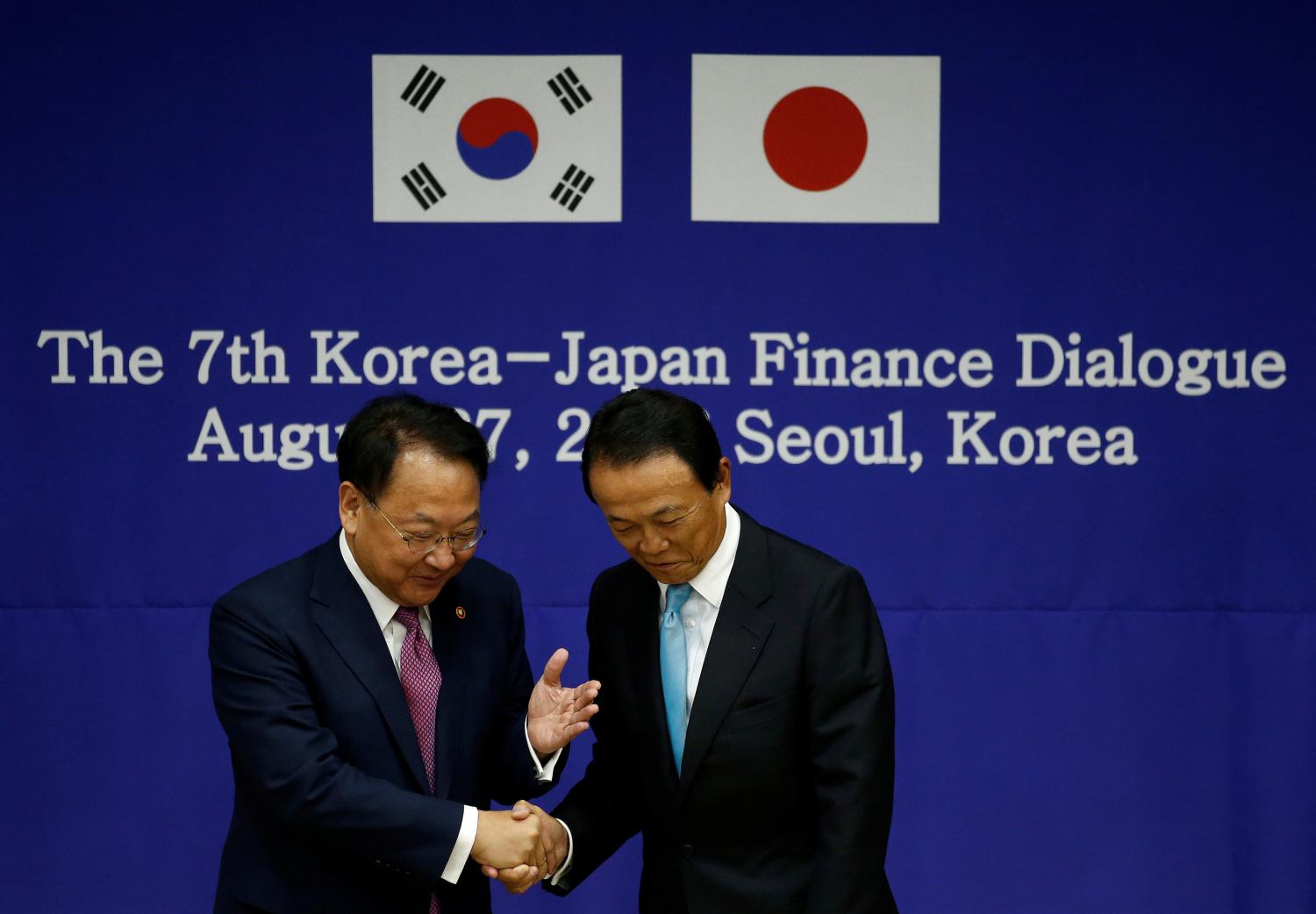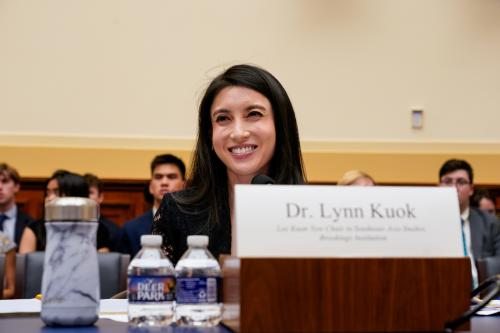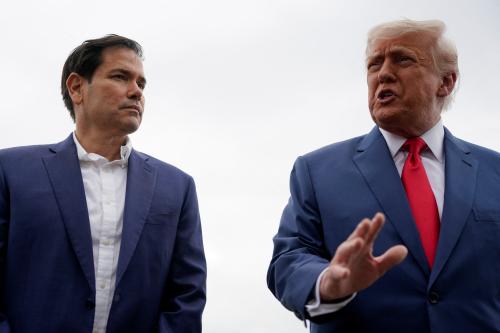APEC faces the challenge of remaining relevant in the future architecture of the Asia-Pacific region. Its relevance could be jeopardized by its hollow dialogue agendas, as well as by a growing number of regional community building projects in the Asia-Pacific region. Unfortunately, it does not appear that the 2008 APEC summit, scheduled to take place in Lima, Peru on November 22-23, will help the forum remain either relevant or important.
As an APEC tradition, it is the host country’s responsibility to come up with a theme for each year’s annual gathering. Every year host countries have scrambled to find some new ideas, programs, and slogans that can associate their names with the summit declarations (such as the Busan Declaration or Manila Action Plan). These declarations or “announceables” are perceived as the best justification for the continuous existence of the APEC forum. There is no doubt that APEC is a useful platform for bilateral and multilateral meetings of regional leaders. But can APEC contribute to substantive regional institutional building in the future?
The theme chosen by the Peruvian government for this year’s APEC summit is, “A New Commitment to the Asia-Pacific Development.” The host country hopes that APEC leaders can deliberate on how to broaden the participation of all players in the process of building the Asia-Pacific community and forge an integral approach to the major issues that affect the region, such as energy security, personal security, climate change, and sustainable economic growth. Yet, as the regional economy is buffeted by financial storms and sliding toward recession, how useful can this kind of broad dialogue be for the region? Should APEC instead focus on something more substantive concerning the financial crisis? At this critical moment of the financial crisis, I believe a more sensible theme for this year’s leaders meeting would be to identify and examine approaches to the regional financial turmoil and economic crisis.
As all Asia-Pacific economies are struggling amid the “financial tsunami,” APEC leaders cannot and should not be distracted from considering the grave impact of the global financial crisis. The financial turmoil caused by the U.S. sub-prime loan crisis and Wall Street derivitatives are taking a heavy toll on the global and regional economy, affecting not only financial markets, resources, and trade, but also the growth of real economy and the regional economic order. As 21 APEC leaders – including those from the U.S., China, Japan, Canada, and Australia – meet in Lima, naturally, they have to talk about these issues and, furthermore, on how to reform the global financial system in the future. How these issues will impact, and be impacted by, the incoming administration of President-elect Barack Obama are also no less interesting to them.
However, making the dialogue agenda more relevant is just part of the story, and how APEC meetings can come up with more “deliverables,” rather than just “annouceables,” is a bigger challenge. People expect APEC leaders not only to deliberate on relevant issues, but also to actually deliver in future regional governance and institutional building. In the years following the Asian financial crisis (AFC) the APEC leaders’ meetings have become more symbolic than substantive. If APEC does not want to be seen as an annual parade of leaders in local clothing and a “photo opportunity,” its current organization, agenda, and objectives must be transformed.
APEC adrift
Established in 1989, APEC was designed to promote sustainable economic growth and to strengthen the multilateral trade system through a commitment to open trade, investment and economic reforms among its member economies. APEC’s membership has grown from the original 12 to include 21 economies at the present time. These 21 members, spanning four continents and representing the most economically dynamic region in the world, account for almost 50% of the world’s population, 60 % of global GDP, and 50% of international trade. Since 1993, APEC’s leaders, ministerial, official, and business group meetings have become the premier forum for facilitating economic growth, cooperation, trade and investment in the Asia-Pacific region. It is a remarkable achievement to see such a trans-Pacific forum promoting economic cooperation at such a high level within such a vast and diverse region. Yet, cooperation over diversity has proved to be a daunting task. APEC now is drifting, and searching for its relevance in regional cooperation. If not carefully managed, it may slip into terminal irrelevance.
APEC faces challenges both from within and without. Internally, it has problems with its membership, agenda, and institutional structure. First, APEC’s original membership structure, reflecting strong trans-Pacific political-economic ties, was centered on a link between East Asia and North America. But after the mid-1990s APEC’s membership was extended beyond the East Asian-North American axis by admitting Russia, Mexico, Chile, Peru, and Papua New Guinea to the organization. As the number of members increased to cover the vast Pacific Rim area, the internal cohesion began to decrease and the focus of interest was diluted. Of course, “widening” membership always comes at the expense of “deepening” cooperation. With more members, it is more difficult to reach consensus on what is desirable for the future. At the same time that the organization was losing its focus, Washington’s leadership role was waning as its strategic concentration began to wander after September 11, 2001.
Second, APEC’s geographic drift is complemented by more wide-ranging and diffuse topics. In the 1990s, APEC was relatively focused on trade liberalization. The 1993 Seattle summit and the following summit in Bogor created a strong momentum for working on the region-wide trade liberalization target by 2010 and 2020. But the growing tension between the interests of “Western” and “Eastern” members and the Asian financial crisis eventually derailed the process of the “early voluntary sectoral liberalization” (EVSL) program in 1998. Since then APEC has been characterized by the strange combination of a loss of direction and mission creep. Every year host governments try to come up with some eye-catching slogans for the summit, while substantive trade liberalization measures are removed from the agenda. In recent years, topics for APEC leaders meeting include cross-cultural communication, shoulder-mounted missile launchers, energy security, and climate change. The annual leaders meeting has become inversely related to APEC’s original goals of trade liberalization. There is more competitive initiative-launching and more “announceables” in the annual gathering than there are substantive measures.
Third, APEC also suffers from “soft institutionalism” and an inadequate institutional foundation. The core idea of APEC’s “soft institutionalism” is that members’ actions or statements are to be strictly voluntary or self-imposed, without any central enforcement mechanism. In the early years, this might have worked when the WTO multilateral negotiations ran into trouble and APEC could serve as a regional engine for trade liberalization. But it failed the effectiveness test when regional crises like the AFC and the 9/11 attacks occurred. Furthermore, the APEC secretariat, with an annual budget of just a few million dollars and a staff of only several dozen, can provide no more than meeting services. APEC was formed with the idea of serving as the Pacific’s OECD, but it does not have an OECD-type of independent research and evaluation ability, not to mention policy formulation and recommendation functions.
APEC and East Asia
The biggest external challenges for APEC are new competitors in East Asian regionalism, and its future relationship with the emerging East Asian community. The “East-West divide” within APEC has existed since its foundation. In the 1990s, APEC’s Asian members were more interested in development and technology cooperation, while Western members perceived it more as a vehicle for promoting trade liberalization. Domestic politics and rising nationalism also suggested that there were different and competing priorities between the “East” and “West” within APEC. The failure of the EVSL and American indifference toward the AFC, however, dramatically reduced enthusiasm for using APEC as a trade negotiation platform. On one hand, it prompted East Asian members to turn to bilateral and Asian-only multilateralism on trade and investment issues. On the other hand, Washington, which originally saw the utility in using APEC as a tool for trade liberalization during the Clinton Administration, began to shift its attention to the Global War on Terror after September 11, 2001. This was a major blow to APEC’s original goal and dialogue agenda of promoting sustainable growth. Searching for its relevance in future regionalism has become a serious challenge for the forum.
In recent years, there has been an increasing number of initiatives, arrangements, and projects on regional community and institutional building in East Asia. These regional measures include bilateral and sub-regional trade agreements, regional security dialogues (such as the ASEAN Regional Forum and Six-Party Talks), regional economic and business fora (such as the Boao Forum and the Asian Cooperation Dialogue), and regular meetings of East Asian leaders (for example, ASEAN+3 and the East Asian Summit). Although some of fora and arrangements are still at an embryonic stage, there should be no question that they will eventually grow to be strong candidates for leadership in regional institution building. It will be a challenge for these East Asian “candidates,” as well as for APEC, to answer how to remap the Asia-Pacific. East Asians have to decide how to proceed with institution-building in the Asia-Pacific region: should the community be for East Asian nations only, or should a trans-Pacific community be built? It is difficult even at this early stage to forge a common vision about the structure and goal of future regional institutions, but ASEAN+3 and the East Asian Summit have already offered more promise in addressing regional economic and governance issues in East Asia than APEC.
The Future of APEC: How to Stay Relevant?
We need to be realistic about the future of APEC. The forum’s reputation is sagging, but it will hang on as all international organizations have robust instincts for self-preservation. APEC leaders must address the problems arising from its membership, institutional structure, modalities of decision making, and leadership as the forum works to redefine its relevance for the future regional architecture. APEC’s early objective of negotiations on intra-APEC trade liberalization has proved to be too ambitious, and most members now prefer bilateral and subregional trade arrangements or multilateralism under the WTO structure. As we see the establishment of more and more bilateral and subregional preferential trading arrangements (PTAs), the chances of launching negotiations on the Free Trade Agreement of the Asia-Pacific (FTAAP) within APEC will diminish, and may become impossible.
Even if APEC cannot serve as a negotiation platform for regional trade liberalization, it does not mean it has lost all chance of promoting free trade in the Asia-Pacific. APEC should use its collective weight to continue pushing the WTO Doha Round of multilateral trade negotiation forward. APEC can still provide some basic functions for business and trade facilitation, can encourage measures to make investment more convenient, can provide technical and development assistance, and can foster socialization, in addition to playing its role as an important meeting venue for regional leaders. These low-profile, business facilitation functions actually serve the region well by producing a higher degree of economic coherence among member economies.
APEC is facing keen competition from other community building initiatives and projects in East Asia, many of which are more active and dynamic. It is imperative for APEC to find its “market niche” in the future regional architecture. Looking into future, APEC will be only one of several Asia-Pacific regional fora. How to define its future role in an appropriate division of labor with other regional arrangements and organizations is a challenge that requires a forward-looking answer. In order to survive, APEC may need to scale back some of its current over-ambitious agendas and initiative-conscious activities, and transfer them to other East Asian fora and mechanisms.
The Brookings Institution is committed to quality, independence, and impact.
We are supported by a diverse array of funders. In line with our values and policies, each Brookings publication represents the sole views of its author(s).




Commentary
Op-edAPEC: The Challenge of Remaining Relevant
November 14, 2008